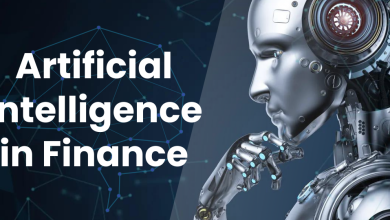
Instinctools is a global software product development and consulting company with over 25 years of experience, specializing in digital transformation and AI-driven product development.
After years of bold promises, AI’s enterprise revolution has finally arrived. In 2025, intelligent agents are no longer theoretical — it’s operational. From managing processes to guiding decisions, these systems are reshaping how organizations think, act, and grow.
With out-of-the-box enterprise-grade stacks such as IBM Watson, Microsoft Copilot Studio, and Salesforce Agentforce now readily available, the infrastructure for intelligent automation is mature, and competitive pressure is mounting. Recent IBM research shows that around 60% of CEOs believe their company’s advantage will hinge on who can deploy the most advanced generative AI capabilities. The question is no longer whether to adopt AI agents, but how fast they can be embedded into core business operations.
Core Transformation Areas
- Process Automation and Operational Efficiency
AI agents excel at automating repetitive, high-volume tasks that have traditionally relied on human oversight. In industries like retail, logistics, and customer service, multi-agent systems now handle triage, categorization, and routing of requests in real time, cutting processing times dramatically without increasing headcount.
One large U.S. online retailer used a network of microservice-based agents to manage a customer support flow serving over three million customers per year. The system automatically categorized, prioritized, and routed between 5,000 and 10,000 tickets daily based on updated business rules. The result was four times faster ticket processing and a 75% drop in first-response time — achieved without expanding the team.
The main value of agentic automation lies not in replacing humans but in extending their capacity. By delegating routine work to intelligent systems, organizations can scale productivity and maintain high service quality even under growing workloads.
- Data-Driven Decision-Making
Modern AI agents are increasingly embedded in decision loops — analyzing live data, referencing organizational knowledge, and recommending or executing actions within defined governance boundaries.
For example, in sales and marketing operations, autonomous AI systems integrated with CRM, project management, and communication tools can qualify and nurture leads, personalizing outreach and optimizing campaigns in real time. Companies using this approach have reported measurable improvements: shorter lead cycles, higher conversion rates, and reduced cost per acquisition.
These figures underscore how agent-driven workflows not only enhance efficiency but also create tangible commercial impact.
- Customer Experience and Personalization
In an era of hyper-personalization, AI agents can deliver experiences that static chatbots cannot. A case in point: *instinctools’ multi-agent travel assistant developed for the GCC market. The client’s rule-based chatbot failed to personalize interactions, forcing users to juggle multiple apps for booking and itinerary management.
The new multi-agent architecture — capable of searching, planning, booking, and adjusting travel itineraries in real time — achieved a 15% uplift in booking conversions and raised user retention from 28% to 41%.
Such results illustrate how agent-driven workflows don’t just increase efficiency — they create new avenues for commercial growth by connecting data with timely, contextual action.
- Human — AI Collaboration
As AI agents take on more operational responsibility, the human role is shifting from doing the work to guiding and coordinating it. Employees are now focused on setting goals, handling exceptions, and ensuring compliance, rather than performing every step manually.
This shift calls for a new kind of workforce — professionals with hybrid skills that blend domain knowledge with workflow design, prompt engineering, and data quality management. In this new way of working, people aren’t being replaced by AI; they’re learning to manage and direct it.
- Innovation and Agility
AI agents are not just efficiency tools; they’re catalysts for innovation. By automating the mundane, they free teams to focus on experimentation, strategy, and creativity. They also enable new forms of agile business — where virtual workers can be spun up, retrained, or redeployed to meet changing priorities.
In research-intensive sectors like pharmaceuticals, software development, and financial services, this translates into shorter development cycles, faster go-to-market timelines, and greater capacity to act on data-driven insights.
Measuring Performance and Building Trust
To evaluate whether AI agents deliver real value, organizations should track performance across four key dimensions:
- Throughput and speed – tasks per hour, time to resolution, percentage of automation.
- Quality – first-contact resolution, repeat-contact rate, and error rate.
- Cost efficiency – total cost per resolution, including infrastructure and model costs.
- Trust and compliance – policy adherence, data integrity, and audit trail completeness.
Trust isn’t something that just appears — it has to be built in by design. The best AI agents act like responsible teammates: transparent, accountable, and easy to audit.
Implementation Journey: From Vision to Value
Implementing AI agents is not a plug-and-play exercise; it’s a structured transformation process. A typical journey involves:
- Business Analysis – mapping operational pain points and identifying where agentic automation delivers the highest ROI.
- Architecture & Design – defining agent roles, data flows, integrations, and governance frameworks.
- Prototyping & Testing – rapid iteration with human-in-the-loop validation.
- Integration & Rollout – connecting agents to live systems and ensuring transparency in data access and decision logic.
- Monitoring & Optimization – auditing performance, retraining models, and scaling successful agents across departments.
This lifecycle approach ensures that agentic automation remains aligned with business goals and sustainable over time.
Common Pitfalls and How to Avoid Them
Many organizations underestimate the complexity of building and maintaining intelligent agents. The most common causes of project failure include:
- Treating agents as fully autonomous systems without proper oversight.
- Low data quality or incomplete knowledge bases.
- Fragile integrations and lack of interoperability across systems.
A pragmatic approach is to start small: select one high-impact workflow, apply tight supervision and governance, and ensure the underlying data is clean and reliable. As I often tell engineering teams, it’s best to treat agents like interns — give them limited access, clear supervision, and room to learn.
The Future of Agentic Enterprises
As AI agents evolve from task-level performers to goal-oriented partners, we are entering the era of agentic enterprises — organizations operating with continuous, embedded intelligence across every process.
This change won’t happen overnight, but the direction is unmistakable. The companies that succeed will be those that combine human creativity and machine autonomy seamlessly — leading with intelligence that is transparent, ethical, and adaptive.
Ultimately, the future of business is not about replacing people. It’s about empowering them to work alongside intelligent systems — augmenting human potential with scalable, self-learning partners.
Author
Alexej Astakhov — Vice President of Engineering at *instinctools. Alexej leads a multidisciplinary team dedicated to delivering software solutions that align with clients’ strategic objectives.
Combining deep technical expertise with a passion for innovation, he drives the company’s engineering vision, ensuring every project incorporates the latest advancements in AI and digital product development.
Earlier in his career, Alexej was a core developer at Burda Digital Systems, where he contributed to the creation of an advanced online information management platform. He is deeply committed to building high-performing teams and creating software that delivers measurable business impact.




